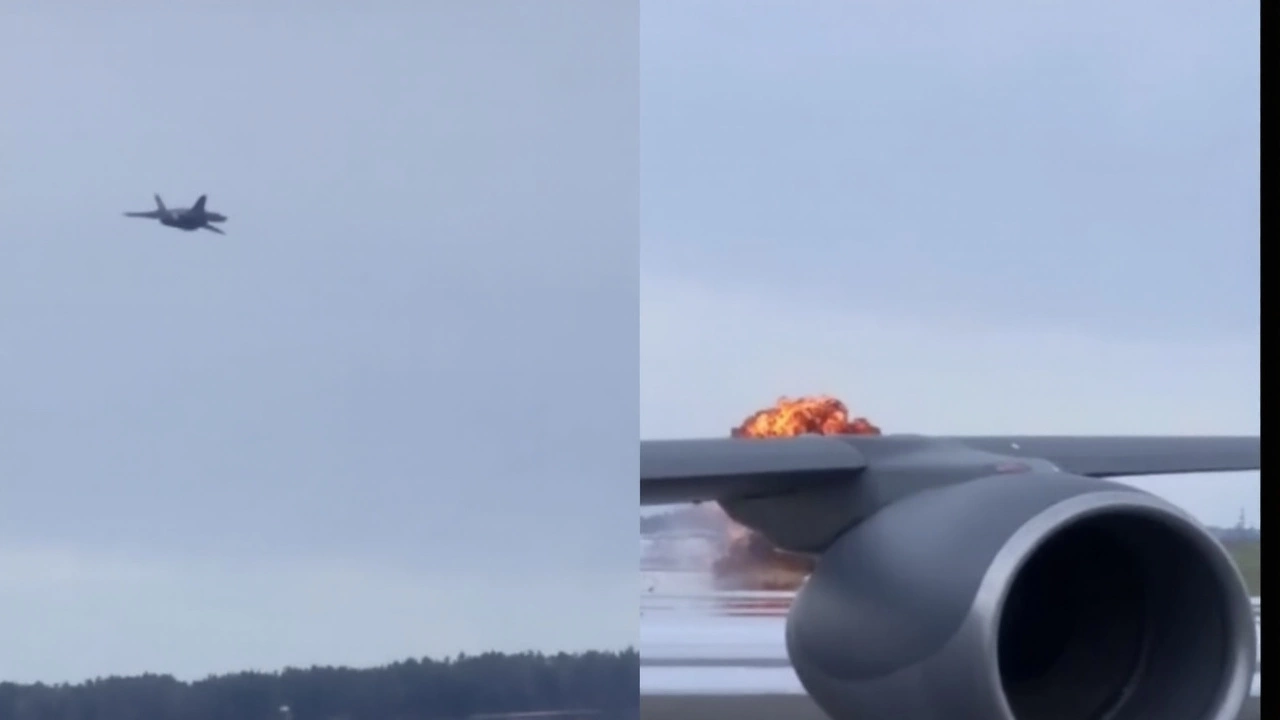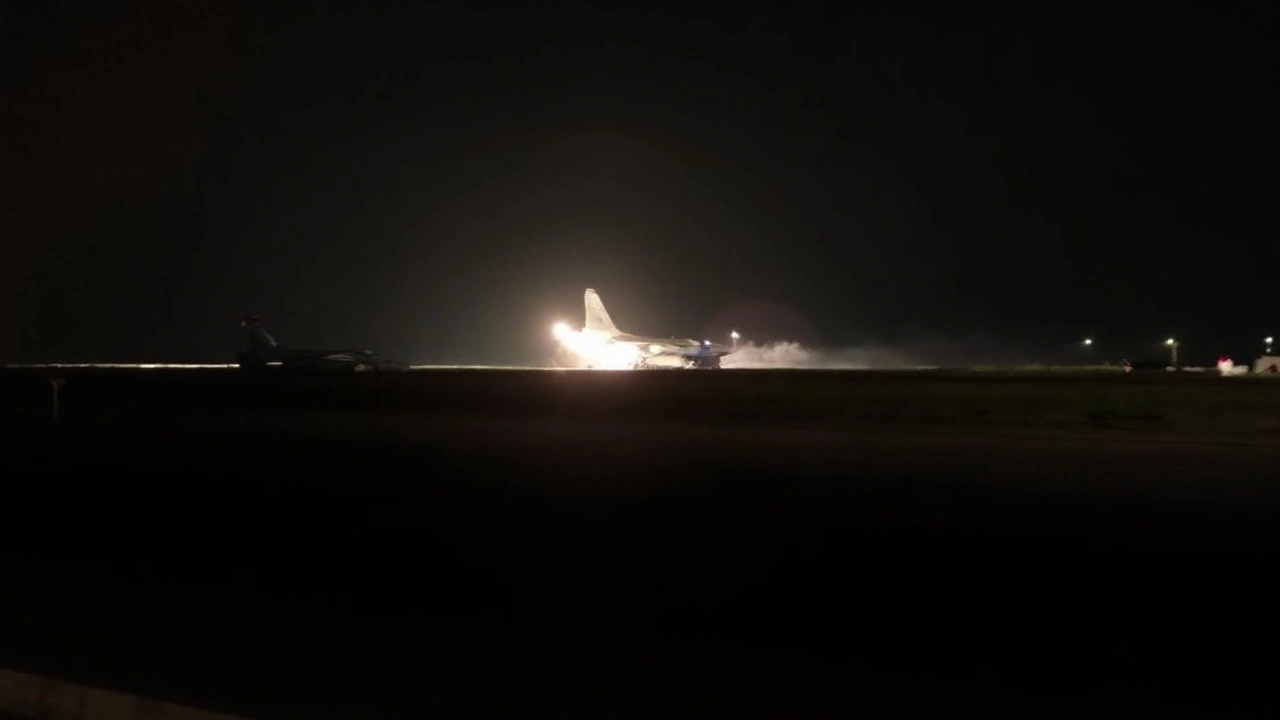What happened on the runway
A Malaysian F/A-18D Hornet caught fire during takeoff at Kuantan Air Base on Thursday night, lighting up the end of the runway in a sudden flash. The incident happened at 9:05 p.m. local time, roughly 110 miles east of Kuala Lumpur. Video from the base shows the twin-engine jet accelerating, then a burst of flames as the takeoff attempt collapsed into chaos.
The two-person crew— a 34-year-old pilot and a 28-year-old weapons system officer—ejected almost instantly. Ground teams reached them within minutes. Both were sent to a military hospital for checks and later discharged in stable condition, according to General Muhamad Norazlan Aris. No serious injuries were reported, which is a small miracle given the violence of a runway fire and the low altitude at which they had to eject.
The Air Force hasn’t said how much of the aircraft survived the blaze. From the footage, the fire appears intense, suggesting heavy damage. The service sealed off the area for investigators and safety crews. Even a brief runway incident like this can snarl base operations, forcing units to shift schedules, move jets, or fly from different airfields until debris is cleared and the surface is inspected.
Prime Minister Anwar Ibrahim ordered a thorough investigation. That will likely involve a standard flight safety board, a review of maintenance logs, interviews with the crew and ground staff, and a deep look at engine and fuel system components. If the jet’s flight data and video recorders are intact, they will help map the final seconds before the fire. The Air Force has not given a timeline for its findings.

Why this matters for Malaysia’s air power
The Hornet involved is part of Malaysia’s small fleet of eight F/A-18D jets, in service since 1997. The D-model is a two-seat, twin-engine multirole fighter, built to handle daytime and nighttime missions, from intercepts to precision strikes. It’s an older airframe by modern standards, but it remains capable and relevant, especially for maritime patrols and quick-reaction alerts along busy air and sea lanes.
That age is exactly why this incident will draw extra scrutiny. Legacy Hornets are out of production, and keeping them at high readiness takes careful maintenance and a steady flow of spares. Malaysia has sustained the fleet through upgrades and overhauls, but any runway fire raises questions: Was it a maintenance issue, a component failure, a fuel leak, or something external that hit at the worst possible moment?
There are several common culprits when a fighter erupts in flames during takeoff. Foreign object debris can get sucked into an engine and trigger a catastrophic failure. A bird strike can do the same, especially at low altitude with little time to react. Fuel system leaks or ruptured lines can lead to sudden fire. Even a tire burst can cause cascading damage if debris hits a fuel or hydraulic line. Investigators will work through each possibility, piece by piece, to pinpoint the cause.
The crew’s survival underscores how much modern safety systems matter. The Hornet family uses zero-zero ejection seats, designed to fire even at zero altitude and zero airspeed. That window—those first moments when a jet is still low, heavy with fuel, and fighting to climb—is the most unforgiving part of flight. Training, muscle memory, and the seats themselves likely made the difference here.
Regional context matters too. Malaysia’s fighters patrol crowded airspace and busy maritime zones. The Hornets, along with other frontline jets, help secure approaches to the South China Sea and support joint training with partners. When one of only a handful of multirole fighters is lost or grounded, it narrows the margin for the rest of the fleet. Even if the jet is repairable, it will be off the line while the investigation runs its course.
Malaysia has already started refreshing parts of its air arm, including a recent order for new light fighters to handle training and air policing duties—an attempt to spread the workload so legacy jets aren’t pushed beyond their limits. That shift makes practical sense: use cheaper-to-operate aircraft for routine tasks, and keep high-end fighters for the jobs that truly need them.
Accidents do happen in military aviation, and not all of them point to a systemic problem. But each one is a data point. If the board of inquiry finds a technical fault, the fix can roll across the fleet. If it finds a human factor—like checklist pressures or a runway condition issue—training and procedures can change. Either way, the goal is the same: make the next takeoff safer than the last.
For now, the questions outnumber the answers. What triggered the fire? How quickly did it spread? Did the crew see engine warnings or feel a loss of thrust? Was there any sign of birds or debris on the runway? The investigation will be methodical. Findings usually start with a preliminary report within weeks, followed by a final review once labs finish analyzing components and any recorder data.
What’s clear is that two aviators walked away from a fireball at the end of a runway—a testament to training, quick decision-making, and equipment that did exactly what it was built to do. The Air Force will want to know precisely why they needed it in the first place. Until that answer arrives, the fleet flies on with one less aircraft available and a renewed focus on checks, spares, and those first critical seconds of takeoff.
